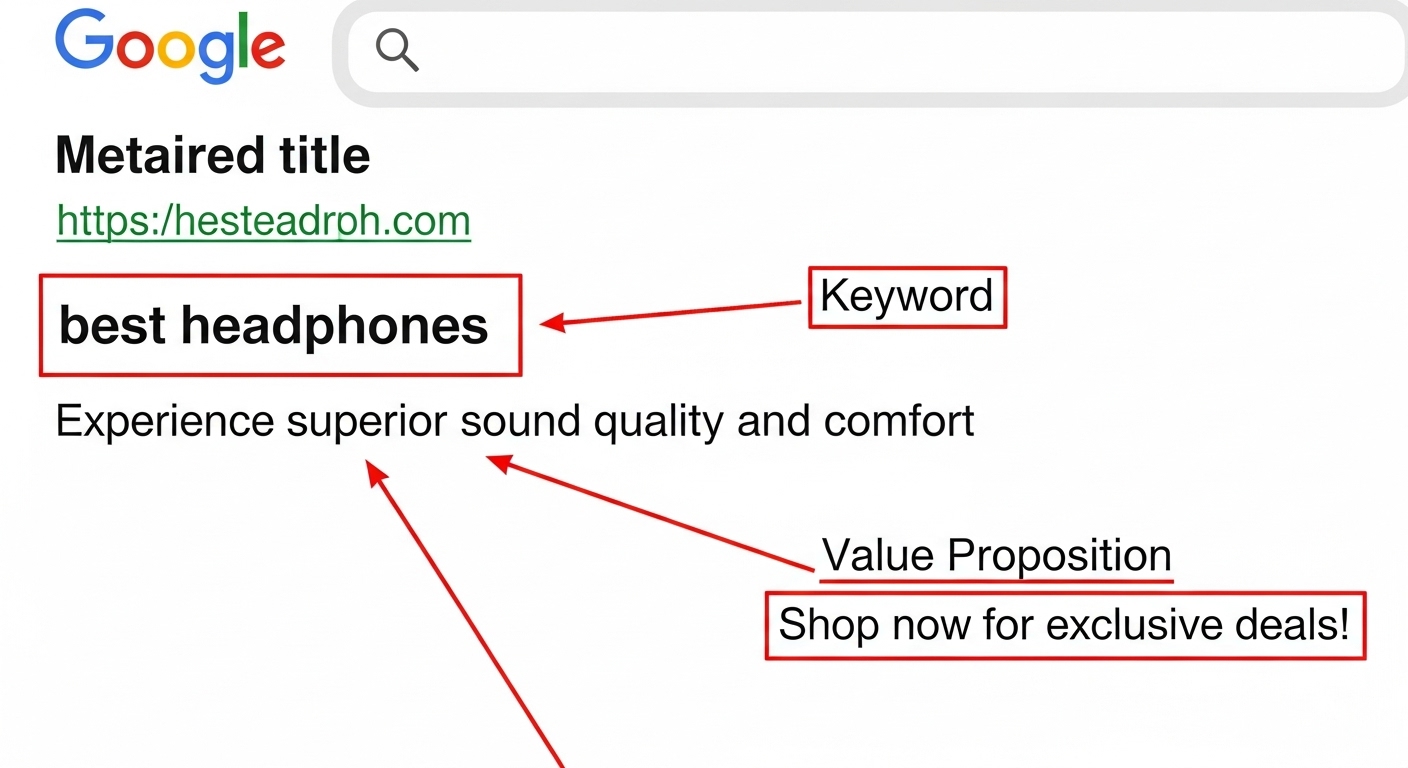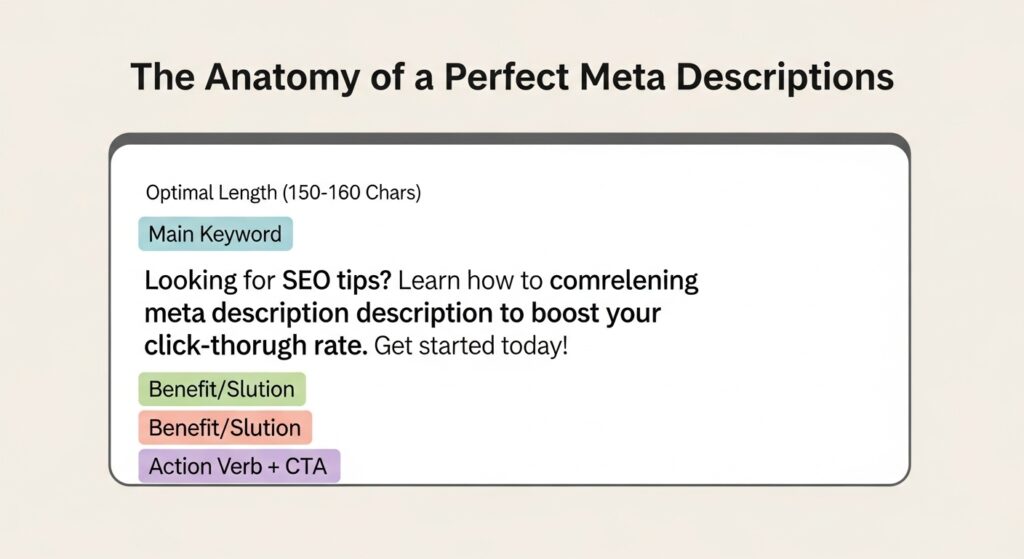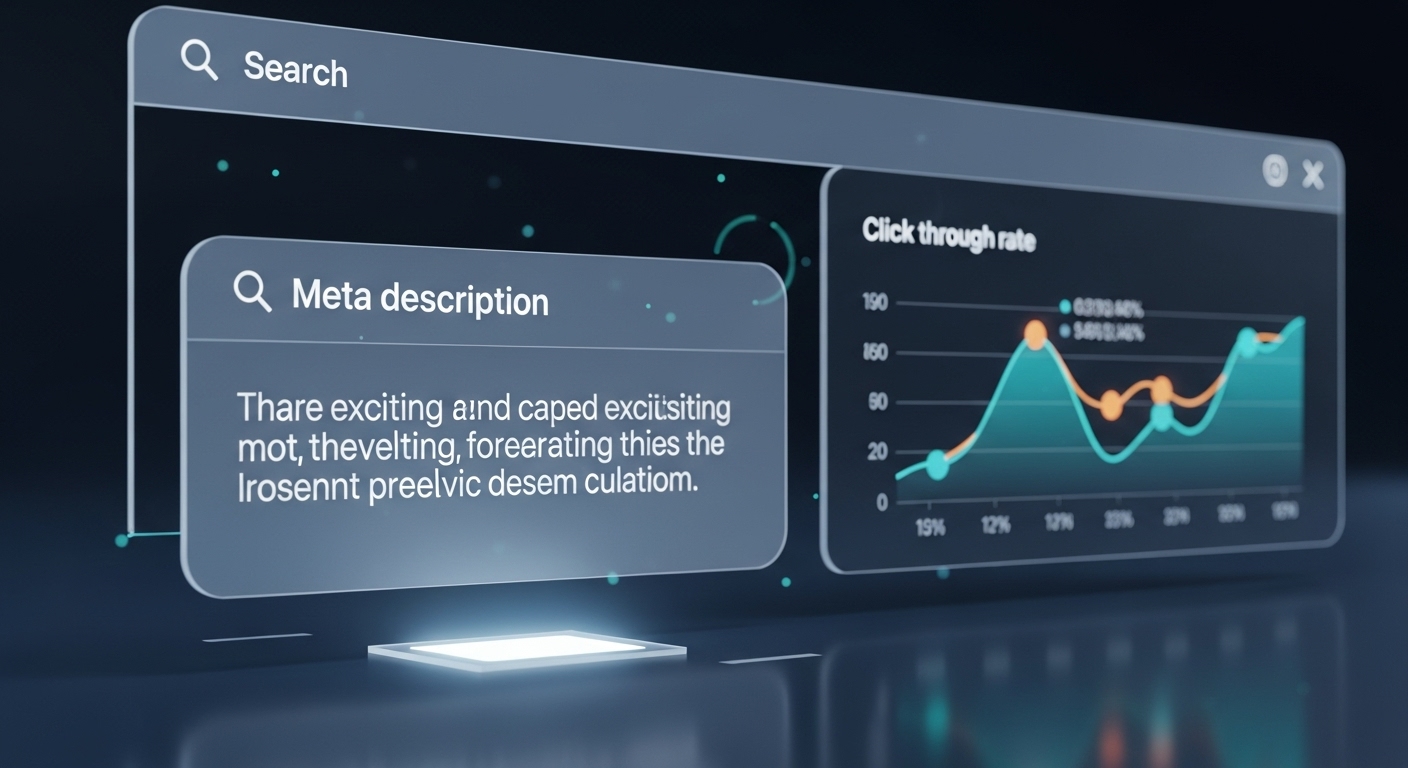Mastering Meta Descriptions in 2025: An Expert Guide to Boosting CTR
In the fast-paced world of SEO, it’s easy to get lost in complex strategies like programmatic SEO and advanced schema markups. But what if I told you that a 160-character snippet of text is still one of the most powerful tools for driving clicks? That’s the magic of a well-crafted meta description.
While it’s not a direct ranking factor, the meta description is your one-shot sales pitch on the SERP (Search Engine Results Page). It’s your chance to grab a user’s attention and convince them that your page has the answers they need. In my experience, a compelling meta description can be the deciding factor between a user clicking on your result or your competitor’s—even if you rank slightly lower.
This guide will walk you through the best practices for writing meta descriptions in 2025 to help you stand out, boost your click-through rate (CTR), and drive more qualified traffic to your site.
Key Takeaways: Quick Summary
- Optimal Length: Keep meta descriptions between 150-160 characters to avoid truncation on desktop and around 120 characters for mobile.
- Include Primary Keyword: Naturally place your main long-tail keyword in the description.
- Focus on User Intent: Write for humans, not just bots. Address the user’s problem and offer a clear solution.
- Use an Active Voice: Start with action verbs to create a sense of urgency and directness.
- Add a Call-to-Action (CTA): Encourage the click with phrases like “Learn more,” “Discover how,” or “Find out.”
- Be Honest: Accurately describe the content on the page to build trust and reduce bounce rates.
What is a Meta Description?
A meta description is an HTML attribute that provides a brief summary of a webpage’s content. Search engines like Google often display this summary in the search results right below the page title.
Here’s a simple example of what it looks like in the HTML:
<meta name="description" content="This is where your compelling, keyword-rich summary of the page content goes.">
While Google reserves the right to rewrite your meta description with text from your page, a well-written one is used more often than not. Taking the time to craft a unique description is a critical part of on-page SEO.

Why Meta Descriptions Still Matter in 2025
Some SEOs argue that since meta descriptions aren’t a direct ranking signal, they aren’t worth the effort. From my years in this field, I can tell you that’s a shortsighted view.
Here’s why they are more important than ever:
- They Directly Impact CTR: This is the biggest benefit. A great description acts like ad copy, persuading users to click on your link. A higher CTR signals to Google that your page is a relevant result, which can indirectly improve your rankings over time. For more on this, check out this insightful guide on how user interaction signals can affect SEO from a high-authority source like the Search Engine Journal.
- They Differentiate You From Competitors: The SERP is a crowded space. A generic, auto-generated description blends in. A unique, benefit-driven one helps you stand out and capture the user’s attention. A great meta description works hand-in-hand with a powerful title. How to Write SEO Title Tags That Get Clicks.
- They Set Expectations: A good meta description tells the user exactly what they will find on your page. This pre-qualifies your traffic, leading to lower bounce rates and higher engagement from the visitors who arrive on your site.
7 Best Practices for Writing Meta Descriptions in 2025
Ready to write descriptions that get clicks? Here are the strategies that I’ve found work best for my clients.
1. Master the Optimal Length
While the exact limit can fluctuate, the sweet spot for meta description length in 2025 is:
- Desktop: Around 150-160 characters.
- Mobile: Closer to 120 characters.
To be safe, I always recommend putting the most important information, including your keyword and CTA, in the first 120 characters. This ensures your core message gets across, no matter the device.
2. Weave in Your Primary Keyword
It’s crucial to include your target keyword in the meta description. When a user searches for that term, Google will bold it in your description, making your result stand out even more.
Don’t just stuff the keyword in. Integrate it naturally so it reads like a normal, helpful sentence.
- Bad Example: We have the best practices for writing meta descriptions in 2025. SEO meta description best practices are here.
- Good Example: Discover the best practices for writing meta descriptions in 2025 to boost your CTR and drive more traffic.
3. Write for Humans, Answer the Intent
Before you write a single word, ask yourself: “What is the user who is searching for this keyword actually looking for?” Are they looking for a list, a guide, a definition, or a solution?
Your meta description should directly address that search intent.

4. Use an Active Voice and Actionable Language
Passive voice is boring. Active voice is engaging and direct. Start your descriptions with strong, action-oriented verbs whenever possible.
Instead of saying, “The benefits of keyword research are explained…” try “Discover the key benefits of keyword research that will transform your SEO strategy.”
5. Include a Clear Call-to-Action (CTA)
You’ve hooked them with a great summary; now it’s time to encourage the click. A subtle CTA at the end of your description can make a significant difference. You’re not being pushy; you’re gently guiding them to the next step.
6. Make it Unique and Compelling
Every page on your website should have a unique meta description. Duplicating them across pages is a missed opportunity and can look lazy to search engines. Think of it as a key part of your Ultimate On−Page SEO Checklist.
Think about what makes your content special. Do you have a unique data point, a free template, or an expert insight? Mention it!
- Generic: This article is about on-page SEO.
- Compelling: Learn 15 actionable on-page SEO techniques that boosted our organic traffic by 157%. Includes a free checklist to get you started!
7. Be Honest and Accurate
Clickbait is tempting, but it’s a long-term killer for your site’s authority. Your meta description must be an honest reflection of the content on the page. Misleading users will lead to a high bounce rate, which tells Google your page isn’t a good result for that query.
Advanced Techniques to Maximize Your CTR
Mastering the basics is essential, but to truly dominate the SERPs, you need to go a step further. In my experience, these advanced techniques can make a significant difference.
Leverage Schema Markup for Richer Snippets
Schema markup is code that helps search engines understand your content more deeply. For a blog post, implementing Article schema is standard. More importantly, since this article has an FAQ section, you should use FAQPage schema. This can make your questions eligible to appear directly in the SERPs as a rich snippet, taking up more space and pushing competitors down.
Analyze and A/B Test Your Descriptions
Don’t just set it and forget it. Use a tool like Google Search Console to track the CTR for your most important pages. If a page has high impressions but low CTR, the meta description is a prime candidate for a rewrite. You can also use plugins or services to A/B test different descriptions to see which version earns more clicks.
Great Meta Description Examples in the Wild
- Nike: “Experience the new Nike Pegasus 41. Featuring a full-length ReactX foam midsole and forefoot and heel Air Zoom units, it’s our most responsive Pegasus yet. Shop now.” (Benefit-driven, mentions new features, strong CTA).
- HubSpot: “Get a free, personalized demo of HubSpot’s marketing software. See how HubSpot can help you generate leads, close deals, and create a remarkable customer experience.” (Uses “free,” focuses on solving user problems).
Helpful Tools for Meta Descriptions
- Yoast SEO / Rank Math: If you’re on WordPress, these plugins provide a real-time snippet preview and character counter.
- SERPsim.com: A simple, free web-based tool that shows you exactly how your title and description will look on Google for desktop and mobile.
- Google Search Console: Essential for tracking the performance (impressions vs. clicks) of your existing meta descriptions.
Conclusion: Your Tiny Ad with a Big Impact
Writing a great meta description is a blend of art and science. By following these best practices and incorporating advanced techniques, you can transform your SERP snippets from simple text into powerful click-driving assets.
Frequently Asked Questions
Do meta descriptions directly affect SEO rankings?
No, meta descriptions are not a direct ranking factor. However, they have a strong indirect impact. A compelling description increases your click-through rate (CTR), and a high CTR is a positive signal to Google that your page is a good match for the query, which can lead to improved rankings over time.
What happens if I don’t write a meta description?
If you leave the meta description blank, Google will automatically generate one for you by pulling what it considers to be the most relevant snippet of text from the page content itself. While this is better than nothing, it’s often disjointed and not as compelling as a manually crafted description.
Should I use emojis in my meta descriptions?
You can, but use them sparingly and strategically. Emojis can help your snippet stand out on the SERP and add a touch of personality. However, only use emojis that are relevant to your content and brand. A well-placed checkmark ✅ or star ⭐ can be effective, but overdoing it can look spammy.
How are meta descriptions different for e-commerce product pages?
For product pages, your meta description should be even more direct and benefit-oriented. In my experience, it’s best to include key product specs like the price, brand, and unique features. Creating a sense of urgency can also work well. For example: “Shop the new Nike Air Zoom Pegasus. Lightweight, durable, and built for speed. Free shipping on all orders. Get yours today!”
